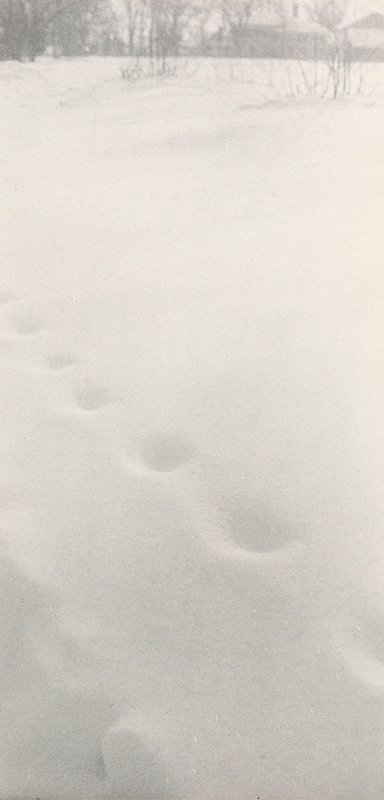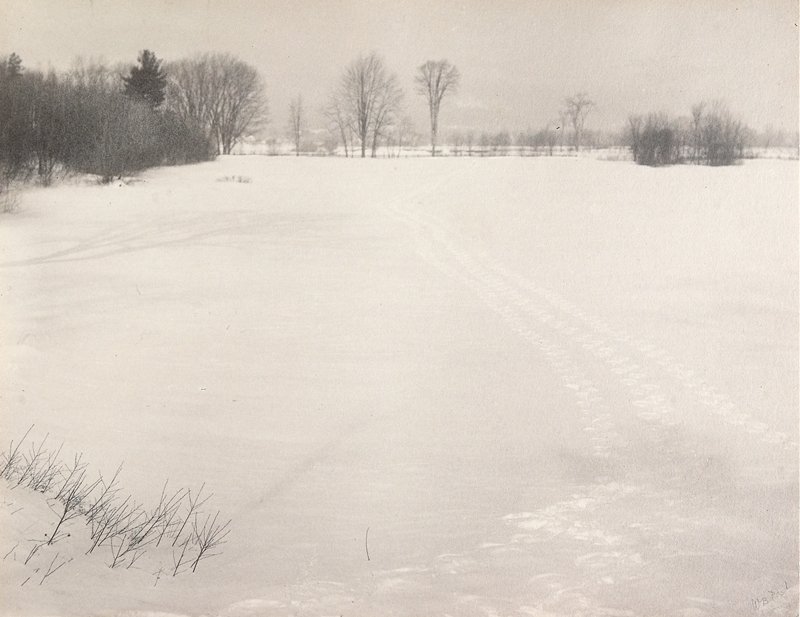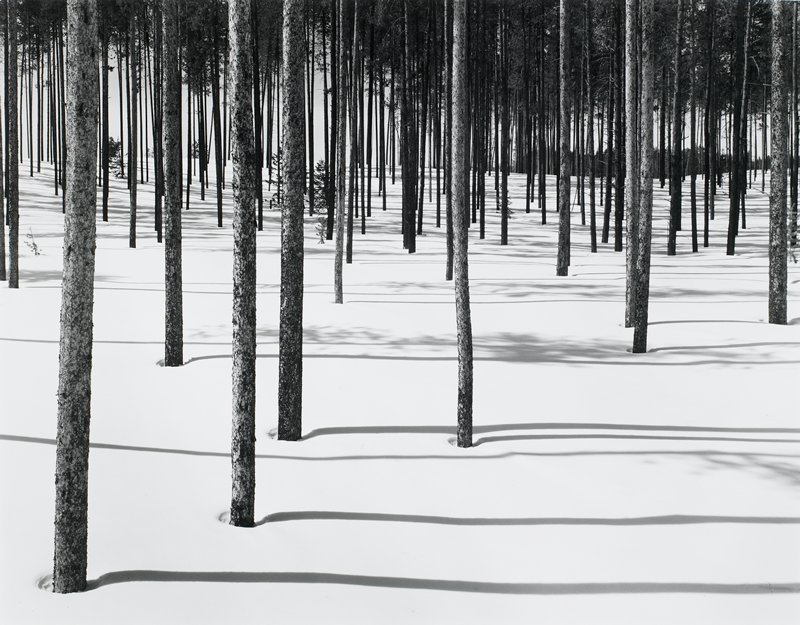Weather or Not
Weather is a popular topic for discussion. It's also a favorite subject for artists.
Fact #1: A Storm Approaches
On July 13, 1890, a tornado touched down on the shores of Lake Gervais, a few miles northeast of St. Paul, Minnesota. The huge wind funnel took the lives of six people, injured eleven others, and caused much damage to houses in the area.
William F. Koester, a local photographer, happened to have his camera set up that fateful day. He planned to take scenic pictures from a high bluff overlooking the city of St. Paul. Instead, he captured a moment of history by photographing the tornado as it loomed over the city.
Koester published his pictures of the scene on souvenir cards that were sold to the public. Julius Holm, a house painter whose ambition was to become an artist, found the photographs intriguing and decided to make a painting from one of them. His painting stayed true to the photograph except that he added color, to intensify the drama of the event.

Fact #1 caption/s
Pictures of major storms taken by photographers were made into souvenir cards. This card shows the destruction caused by a tornado that touched down in New Ulm, Minnesota, on July 15, 1881.
Voobie, Tornado 06, 2005, digital photograph
****
Fact #2: Whichever Way the Wind Blows
A weathervane is movable device used to show the direction of the wind. It is placed high up on a building, often on a cupola (an ornamental dome put on a roof). The history of weathervanes can be traced all the way back to 48 B.C., to the Tower of the Winds in Athens, Greece. That marble structure contained a huge weathervane in the shape of a Triton, a Greek sea-god that was part man, part fish.
Although weathervanes come in all shapes and sizes, the rooster has traditionally been the most popular. According to legend, in the 9th century the pope decreed that all church steeples must have a rooster placed on top. This was a reminder of the Bible story in which Peter, one of Jesus twelve disciples, denied knowing Jesus three times before the rooster crowed in the morning. Seeing the rooster would encourage believers to have strong faith.
Today, you can find weathervanes in many different shapes, horses, eagles, mermaids, dogs, and angels, to name just a few. Look around your neighborhood to see what kind of weathervanes you can find!


Fact #2 caption/s
One reason for roosters popularity as weathervanes (besides their religious symbolism) was their asymmetrical shape. The rooster's head always faces the wind. Rooster weathervane, about 1860, iron, Gift of John and Elizabeth Driscoll

****
Fact #3: A Subject for all Seasons
Beginning in the late 1880s, the Impressionist painter Claude Monet decided to paint the same subjects over and over, in different seasons and under varying light and weather conditions. He made series paintings of hillsides, cathedrals, cliffs, bridges, water lilies, poplar trees, and grainstacks.
This picture was painted at sunrise on a dewy autumn morning. Misty air fills the entire scene, and the brightness forms a halo around the grainstack. Up close, you can see vibrant dashes of color, but from a distance the whole image seems to shimmer. It's the beginning of a beautiful day.

Fact #3 caption/s
Monet painted the grainstacks throughout the year in all kinds of weather. What season do you see here?
This grainstack was painted at the end of the day. How is the light here different from the light in the painting made as the sun was rising?
****
Fact #4: Caught in a Downpour
It takes only a moment to figure out that a rainstorm is taking place in this scene. How does the artist let you know? Maybe you were tipped off by the dark gray sky blanketing everything in the picturethe trees, buildings, bridge, and river. Or perhaps it was the sharp diagonal white lines, representing sheets of rain.
Look closely and you will see other signs of the harsh weather. In the right foreground, two people about to cross the bridge have hunched up their backs against the rain and wind. The figure in yellow has also bent his head down, for more protection from the storm. It's easy to imagine that one more gust of wind might blow these people to the ground!
The setting for this scene is the Saegusa Bridge in Hakone, Japan. It is not surprising that the artist decided to show a rainstorm. Like most of Japan, Hakone has a long rainy season in June and July and a typhoon season, which brings hurricanes, in September.

Fact #4 caption/s
This woodblock print illustrates another rainy day. How did the artist create the illusion of rain here?

Japanese woodblock prints often picture scenes of everyday life. In the spring and summer, rain is common in Japan.

****
Fact #5: Footprints in the Snow
William Post loved to photograph the cold, snowy landscape near his home in Fryeburg, Maine. Winter work, he said, is as full of trouble and requires as much patience as any other in photography; but when all goes well the results are truer and more satisfactory than most other landscape work. Full of trouble indeed! Besides making the photographer uncomfortable, bitter cold weather could be bad for the camera equipment.
What was so compelling about winter scenes? Post loved the absence of color when the world was covered in white. Then he could capture subtle tones and soft shadows. In many of his photographs, Post placed the horizon line very high up, filling most of the picture with the snowy ground.
There is a sense of mystery in Post's images. He usually didn't include any buildings, so you feel alone in nature, not sure exactly where you are. In this photograph, you see a track of footprints, but you don't know who they belong to or where they are going. Take a quiet moment to imagine where they might lead.

Fact #5 caption/s
In many of Post's winter images, the snow-filled ground takes up most of the picture.

Despite the frigid conditions, photographers enjoy capturing winter scenes.

****
Related Activities
****
Weather Report
Pick one of the artworks featured in Weather or Not and write a weather report based on what you see. Include information such as the temperature, likelihood of precipitation, wind speed, and suggested outerwear for the day. Check out the weather report in your local newspaper to find out what other details to report on.
Weathervane Hunt
Go on a hunt for weathervanes in your own neighborhood. If possible, bring a camera along to document your search. You may be surprised at how many you find once you take a moment to look!
A Change of Scenery
Claude Monet liked to paint his subjects in series so he could capture changes in light and weather. Go outside on a sunny day and paint an area of your school's playground. Then, paint the same area again on a cloudy day. How do the two paintings differ? You could also take two color photos to compare and contrast.
Children's Fiction and Nonfiction
Adams, Simon. The Best Book of Weather. Boston: Kingfisher, 2001.
Keats, Ezra Jack. The Snowy Day. New York: Viking Press, 1962.
Simon, Seymour. Weather. New York: Morrow Junior Books, 1993.
Steig, William. Brave Irene. New York: Farrar, Straus, and Giroux, 1986.
Stolz, Mary. Storm in the Night. New York: Harper & Row, 1988."